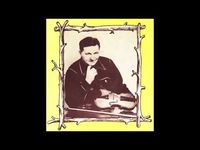Annotation:Bride of the Wind: Difference between revisions
No edit summary |
No edit summary |
||
| Line 1: | Line 1: | ||
{{TuneAnnotation | {{TuneAnnotation | ||
|f_annotation='''BRIDE OF THE WIND(S)'''. AKA and see "[[Anoy's Jig]]," "[[Quadrille (28)]]." Canadian, Jig (6/8 time). C Major. Standard tuning (fiddle). AABB (Jarman): AA'AA'BB'BB' (Phillips). The composition was credited to Canadian fiddler Jim Magill in Jarman's 1944 (Anglo-)Canadian publication; however, the tune had been recorded by French-Canadian fiddler Joseph Bouchard as the first part of his "[[Lancier Bouchard Premiere Partie]]" in 1938. Even earlier, in 1924, a version was recorded by Michigan fiddler [[biography:John A. Pattee{{!}}John A. Pattee]] (b. 1844) as the 1st change in his "[[Old Catville Quadrille]]" (a 1924 recording that can be heard at [https://www.michiganfiddle.com/recordings/]). The first strain is | |f_annotation='''BRIDE OF THE WIND(S)'''. AKA and see "[[Anoy's Jig]]," "[[Quadrille (28)]]." Canadian, Jig (6/8 time). C Major. Standard tuning (fiddle). AABB (Jarman): AA'AA'BB'BB' (Phillips). The composition was credited to Canadian fiddler Jim Magill in Jarman's 1944 (Anglo-)Canadian publication; however, the tune had been recorded by French-Canadian fiddler Joseph Bouchard as the first part of his "[[Lancier Bouchard Premiere Partie]]" in 1938. Even earlier, in 1924, a version was recorded by Michigan fiddler [[biography:John A. Pattee{{!}}John A. Pattee]] (b. 1844) as the 1st change in his "[[Old Catville Quadrille]]" (a 1924 recording that can be heard at [https://www.michiganfiddle.com/recordings/]). The first strain is similar to "Bride of the Wind" but the second differs. It also appears under the title "[[Anoy's Jig]]" in Don Messer's repertoire, although Messer and his group also recorded Magill's "Bride of the Wind". It is related (set in 2/4 time) to "[[Whalen's Breakdown]]" which Messer popularized during his career. Versions of the melody appear as an untitled quadrille tune in R.P. Christeson's '''Old-Time Fiddler's Repertory''', vol. 1 (1973, No. 182, p. 130) and in Bayard's '''Dance to the Fiddle, March to the Fife''' (No. 523). | ||
[[File:magill.jpg{{!}}200px{{!}}thumb{{!}}left{{!}}Jim Magill (1905-1954)]] | [[File:magill.jpg{{!}}200px{{!}}thumb{{!}}left{{!}}Jim Magill (1905-1954)]] | ||
See also note for "[[annotation:Old Catville Quadrille]]" for more | See also note for "[[annotation:Old Catville Quadrille|Old Catville Quadrille]]" for more information. | ||
<br> | <br> | ||
<br> | <br> | ||
Latest revision as of 06:00, 18 July 2024
X: 0 T:Bride of the Wind B:Robert P. Christeson, The Old-Time Fiddler's Repertory, No. 182 S:Uncle Bob Walters (1896-1960), Nebraska L: 1/8 M: 6/8 Z: ABC by Joel Shimberg from Christeson's notation. K: D %Transposed from C V:1 clef=treble name="0." [V:1] f/2g/2 | a^ga baf | dcB A2 d | cde B2 c | dcB A2 a| a^ga baf | dcB A2 d | cde B2 c | [d3F3][d2F] :| |:F/2G/2 |A^GA d2 c | BGB e2 d | caa a^ga | bag f2 A | A^GA d2 c | BGB e2 d | caa baf |[d3 f3][d2f2]:|
BRIDE OF THE WIND(S). AKA and see "Anoy's Jig," "Quadrille (28)." Canadian, Jig (6/8 time). C Major. Standard tuning (fiddle). AABB (Jarman): AA'AA'BB'BB' (Phillips). The composition was credited to Canadian fiddler Jim Magill in Jarman's 1944 (Anglo-)Canadian publication; however, the tune had been recorded by French-Canadian fiddler Joseph Bouchard as the first part of his "Lancier Bouchard Premiere Partie" in 1938. Even earlier, in 1924, a version was recorded by Michigan fiddler John A. Pattee (b. 1844) as the 1st change in his "Old Catville Quadrille" (a 1924 recording that can be heard at [1]). The first strain is similar to "Bride of the Wind" but the second differs. It also appears under the title "Anoy's Jig" in Don Messer's repertoire, although Messer and his group also recorded Magill's "Bride of the Wind". It is related (set in 2/4 time) to "Whalen's Breakdown" which Messer popularized during his career. Versions of the melody appear as an untitled quadrille tune in R.P. Christeson's Old-Time Fiddler's Repertory, vol. 1 (1973, No. 182, p. 130) and in Bayard's Dance to the Fiddle, March to the Fife (No. 523).

See also note for "Old Catville Quadrille" for more information.
The title is the English translation of the German phrase die Windsbraut, used to refer to a storm or tempest.

